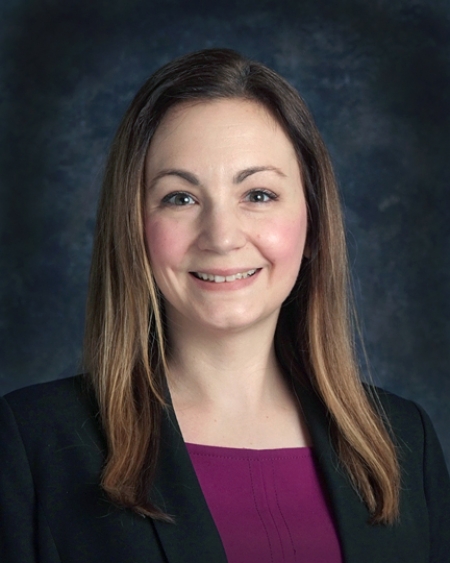September 20 & 21, 2023
7:00 – 10:00 PDT / 10:00 – 13:00 EDT / 16:00 – 19:00 CEST
REGISTER NOW
Building on the success of our two 2020 virtual events (Special Event “Response to COVID-19” and Meeting V – Zooming into the AIRR Community Meeting), the Meetings Sub-committee has partnered with the Executive Sub-committee and the Diagnostics Working Group to create a mid-cycle virtual event. This 2-day virtual meeting includes an interactive session day dedicated to the Working Group and Sub-committee achievements, challenges and updates and a day focused on a special Diagnostics session entitled “Bringing AIRR-seq to the clinic – mapping the challenges“.
All times are listed in EDT.
September 20th, 2023
Working Group and Sub-committee Updates & Discussions
- [10:00 – 10:10] Zooming in to the Community II Meeting Opening & Introduction (Victor Greiff, AIRR-C Chair)
- [10:10 – 10:20] Biological Resources Working Group
- [10:20 – 10:30] Common Repository Working Group
- [10:30 – 10:40] Diagnostics Working Group
- [10:40 – 10:50] Germline Database Working Group
- [10:50 – 11:00] Legal and Ethics Working Group
- [11:00 – 11:10] Software Working Group
- [11:10 – 11:20] Standards Working Group
- [11:20 – 11:30] Communications Sub-committee
- [11:30 – 11:40] Executive Sub-committee
- [11:40 – 11:50] Inferred Allele Review Sub-committee
- [11:50 – 12:00] Meetings Sub-committee
- [12:00 – 12:10] Strategic Planning Sub-committee
Strategic Planning Sub-committee Session (Victor Greiff and Jamie Scott)
[12:10 – 12:40]Achieving Recognition of the AIRR-C by the Scientific Community and their Adoption of AIRR-C Standards, Tools and Protocols
Session Outline: Over the past 8 years, the AIRR-C has developed a highly integrated system for the generation, utilization and storage of AIRR-seq data, including data and metadata standards, software tools, biological standards, protocols for validating and identifying germline IG and TR genes, reference gene sets, and a network of repositories for AIRR-seq and related data. The AIRR-C has reached maturity with these achievements. However, there remain significant challenges regarding the widespread recognition of the AIRR-C, implementation of its goals, and the adoption and maintenance of its protocols and standards across the scientific immunology community. In this 30-minute session, AIRR-C’s Strategic Planning Sub-committee (SPSC) will present selected challenges and invite AIRR-C Members to “brainstorm” potential strategies for addressing them.
September 21st, 2023
Since the original vision in 2014, the Adaptive Immune Receptor Repertoire (AIRR) Community has established an extensive network of experimental and computational experts in the use of next-generation sequencing technologies to study antibody/B-cell and T-cell receptor repertoires. The goals of the Community are to develop methods and standards for the generation, analysis and sharing of AIRR-seq data that could become references for academic and industrial research. The Community has already addressed critical challenges in these areas. The Community has created protocol recommendations to increase the robustness of data generation. The improvement of data management is achieved by developing data and metadata standards. These standards enable accurate description of AIRR-data and ultimately enable the interoperability of software and facilitate data deposition in repositories. A natural next step is to promote the adoption of AIRR-C standards and protocols in the clinics, i.e. integrated in data submissions or diagnostics software tools, which of course comes with additional challenges, as regulatory requirements might apply to the adopter organizations.
The Diagnostics WG is pleased to invite you to “Bringing AIRR-seq to the clinic – mapping the challenges“, a capacity-building session of AIRR Community Special Event 2023 Zooming in to the Community II designed to unravel the regulatory landscape that could apply to AIRR-seq based products in a clinical setting, from disease monitoring to diagnostics. After a series of talks, a panel discussion will bring together experts to highlight different aspects of the regulatory pathways, with a focus on software as a medical device.
Schedule
Each talk will last 30 minutes. After the talks, there will be a 40 minute panel discussion with the presenters and moderated by Professor Enkelejda Miho.
- [10:00 – 10:10] Opening & Introductions
- [10:10 – 10:40] Talk 1 presented by Jackie Roth: From bedside to bench: assay validation in the clinical genomics laboratory
- [10:40 – 11:10] Talk 2 presented by Frédéric Davi: AIRR-Seq in the clinic: advances in hemato-oncology
- [11:10 – 11:40] Talk 3 presented by Alexander Bernier: Policy challenges for public biological databases – regulated data and the open science commons
- [11:40 – 11:50] Break
- [11:50 – 12:20] Talk 4 presented by Janos Hackenbeck: Intended purpose – start of the road to a CE marked IVD device
- [12:20 – 12:50] Panel discussion
- [12:50 – 13:00] Concluding remarks
Enkelejda Miho, Dr. sc. ETH Zurich, DAS, M.Sc., of University of Applied Sciences and Arts Northwestern Switzerland
Moderator
Bio

Enkelejda Miho is a professor of Digital Life Sciences and team leader of the Laboratory of Artificial Intelligence in Health (aiHealthLab) as well as group leader at Swiss Bioinformatics Institute. Her research focuses on the use of computer science and artificial intelligence for drug discovery and personalized medicine. The mission of aiHealthLab is to apply artificial intelligence in order to set standards, understand mechanisms and guide decisions in healthcare. The group uses analytics for personalized medicine, drug discovery and development, and support systems in clinics.
1. Jackie Roth, PhD, FACMG, of the University of Pennsylvania
From bedside to bench: assay validation in the clinical genomics laboratory
Talk abstract
Clinical laboratory assay validation is a complex process involving assessment of numerous analytic performance characteristics. Regulatory agencies, for example the College of American Pathologists (CAP) and Clinical Laboratory Improvement Amendments (CLIA) in the United States, have set forth standards that must be upheld when validating an assay in the clinical laboratory. Prior to assay validation, however, the clinical utility and economic feasibility, among other factors, must be reviewed and determined to be favorable for a given institution. In certain situations, designing assays in collaboration with other laboratories may prove to be useful and cost-effective. This talk will review key aspects of assay validation and clinical laboratory regulations regarding assay validation. An example of a collaborative next-generation sequencing assay design and implementation will be shared.
Bio

Jacquelyn (Jackie) Roth is currently an Assistant Professor of Clinical Pathology & Laboratory Medicine in the Perelman School of Medicine at the University of Pennsylvania (Penn), where she has been for six years. Jackie serves as the Director of Quality Assurance and Clinical Operations in the Division of Precision and Computational Diagnostics. Prior to her current role, Jackie obtained her PhD in Genetics from Thomas Jefferson University and then completed fellowships through the American Board of Medical Genetics and Genomics in Clinical Cytogenetics and Clinical Molecular Genetics at the Children’s Hospital of Philadelphia. Post fellowship, Jackie worked as the Assistant Director for Research and Development at the Penn Molecular Pathology Laboratory for three years. Her areas of expertise include cytogenetic and molecular alterations in oncology, laboratory research and development, and laboratory quality assurance and regulations.
2. Frédéric Davi, PR. MD-PhD, of Sorbonne Universite
AIRR-Seq in the clinic: advances in hemato-oncology
Talk abstract
Antigen gene receptor genes, due to their complex genetic combinations, constitute unique molecular markers of each lymphoid cell. This has been exploited since many years for the diagnostic and follow-up of lymphoid malignancies. In the late 90’s and early 2000’s, the European group Biomed-2 standardized PCR-based methodologies for assessment of clonality of lymphoproliferations, as well as minimal residual disease quantification. In addition, another European group (ERIC, the European Research Initiative on CLL) provided Sanger-based protocols and recommendations for determination of IGHV mutational status in chronic lymphocytic leukemia, a major prognostic and predictive indicator in this disease. In the last decade, the now-called EuroClonality consortium has been working on producing standardized NGS-based protocols for clonality assessment, MRD detection and repertoire analysis of lymphoid malignancies, which also includes the development of dedicated bioinformatics tools. We will discuss these various NGS-based assays, and how they are implemented in clinical laboratory practice within the field of hemato-oncology. We will also address regulatory issues regarding bioinformatics and healthcare compliance.
Bio

Professor Frédéric Davi’s main research interest is the study of the repertoire of immunoglobulin genes in lymphoid neoplasia. He has been one of the founders of the European Biomed-2 (now-called EuroClonality), who standardized analysis of antigen receptor genes for clonality assessment in lymphoproliferations; he is now member of the Board of the EuroClonality consortium. He is also one of the founders of the ERIC-IG group, dedicated to analysis of immunoglobulin repertoire in chronic lymphocytic leukemia.
3. Alexander Bernier, J.D., LL.M, of McGill University
Policy challenges for public biological databases – regulated data and the open science commons
Talk abstract
The European Commission and other international bodies have increasingly started to foster open science as a strategic priority. Public biological databases accessible to researchers and to the public are a necessary component of open science. In creating such databases, researchers and scientists must balance the open sharing of data against competing interests such as data protection and intellectual property protection. Devolving responsibilities for balancing such interests to researchers can have a chilling effect on data sharing, and can preclude common data governance norms from being developed and debated through shared democratic processes.
Bio

Alexander Bernier is a Montreal-based lawyer, and a doctoral candidate at the University of Toronto Faculty of Law. His doctoral research uses law and economics methodologies to understand how organisations respond to legal rules that govern their use of data. He also acts as the Ethics Officer of the Canadian Open Neuroscience Platform (CONP) and the Chair of the COVID-19 Immunity Task Force (CITF) Data Access Committee. Previously, Alexander acted as an Academic Associate at McGill University’s Centre of Genomics and Policy. In this role, he coordinated the implementation of data governance tools for multiple biomedical research consortia, including the Human Cell Atlas and the European-Canadian Cancer Network (EUCANCan).
4. Janos Hackenbeck, M.Eng. Medical Physics, of the Johner Institute
Intended purpose – start of the road to a CE marked IVD device
Talk abstract
The correct and precise formulation of the intended purpose of in-vitro-diagnostic medical devices is critical for deriving a viable strategy as well as successful development and conformity assessment. As a starting point for the road to a CE marked medical device software, we will discuss the corner stones in the formulation of the intended purpose.
Bio

Janos Hackenbeck studied medical physics. With many years of experience in software quality assurance and in setting up software projects under IEC 62304 and ISO 13485, he is an expert in medical device software. Based in Berlin, he supports clients of the Johner Institute with a focus on software in the field of IVD medical devices. His incentive lies in the implementation of regulatory requirements in efficient and lived development processes in order to remove hurdles in the realisation of innovative medical devices with compliant and at the same time lean documentation.

